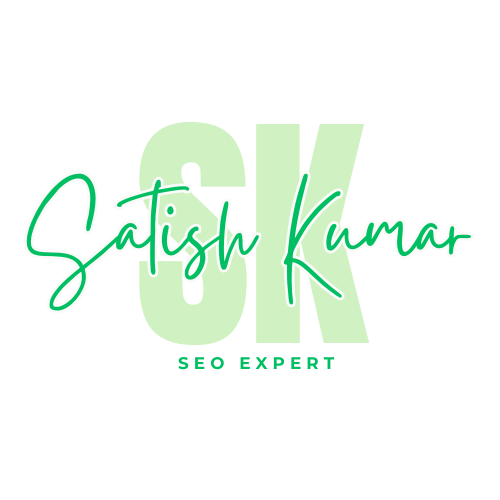We live in a time where customers are becoming more demanding and impatient. They expect immediate gratification from their purchases. This has led to the rise of ecommerce sites such as Amazon and Alibaba. How does this affect the way businesses should approach customer acquisition?
The buyer journey refers to the path or series of steps that leads consumers to purchase a particular product or service. It involves four distinct stages: awareness, interest, consideration, and decision. These stages occur over a period of time before the consumer makes a final purchase.
It’s important to understand these stages because they can influence the success of your marketing strategy. For example, if you want to increase sales, then you’ll need to focus on the stages where potential buyers are at their weakest points. In other words, you’d target the stage where they are least likely to convert into a sale.
What is the buyer’s journey?
The buyer’s journey is a framework for understanding how people buy products and services online. The model was first introduced by Jay Baer in his book “YOUR BRAND IS YOUR BUSINESS”. The idea behind it is that every person who visits your website will go through a series of actions that ultimately results in them making a purchase.
This process consists of four main stages: Awareness, Interest, Consideration, Decision.
What is the buyer’s journey?
The buyer’s journey is a framework for understanding how customers move through different stages of buying decisions. This model helps marketers understand what motivates buyers at each stage of the purchase process, and how they should market to them.
Why Is It Important to Understand Your Customers’ Buyer’s Journey?
Understanding your audience’s journey allows you to identify the best place to make an impact. You can use this information to create content that resonates with your customers at each step along the way.
You can also use this data to better segment your audience so you can reach out to them individually. If you know that someone is interested in purchasing a specific type of product, you can send targeted messages directly to them.
You can even use this information to improve the overall user experience. For example, if someone is having trouble finding something on your site, you can show them related products based on the steps they’ve already taken.
What are the three stages of the buyer’s journey?
There are four key stages within the buyer’s journey. Each one represents a unique opportunity for conversion.
The Awareness Stage (Researching)
In the awareness stage, people start researching your brand. They do this by reading reviews, watching videos, and looking up additional information about your company.
During this phase, people may be considering whether or not to purchase your product or service. However, they haven’t made any commitment yet.
Interest Stage (Learning More About You)
Once people have learned enough about your business, they begin to consider whether or not they’re actually going to purchase from you.
At this point, they might ask themselves questions like “Do I trust you?” and “How much does this cost?”
The Consideration Stage (Deciding Whether to Purchase)
Once people have done some research, they begin evaluating your product or service against competitors. They’re now more confident about their choice. They might even be ready to commit to a purchase.
At this point, people are still very much open to change. So, you need to continue providing value throughout the entire process.
The Decision Stage (Purchasing)
Finally, people decide to purchase your product or sign up for your service. At this stage, they’re committed to making a purchase.
It’s crucial to get visitors to the decision stage as soon as possible. Once they’ve decided to purchase, they’re less likely to change their minds. So, you need a strong call-to-action that encourages them to complete their transaction quickly.
Tailoring Your Sales Process to the Buyer’s Journey
Each stage has its own set of goals and objectives. The most important thing to remember is that every single person who visits your website will go through these stages.
So, it’s essential that you design your sales funnel to match the needs of each individual customer. This means creating different types of pages for each step along the way—and then using those pages to guide visitors through the buying process.
For example, let’s say you sell mobile phones. In the awareness stage, you want to encourage people to read reviews and watch videos. Then, when they’re ready to make a purchase, you want to direct them to a page where they can compare prices and specs.
This approach ensures that everyone gets exactly what they need at exactly the right time. It also helps you avoid frustrating customers with too many options. Instead, you give them only the information they need to make an informed decision.
The Awareness Stage (Researching)
People visit websites because they want to learn something new. But, before they’ll buy anything, they first need to know what they’re getting into.
That’s why the first step in the buyer’s journey should always be education. People aren’t interested in learning unless there’s a clear benefit to doing so. And, if you don’t provide value during the awareness stage, you won’t succeed later on.
That’s why it’s critical to create content that answers common questions. For example, if you sell mobile phones, you could write articles explaining how smartphones work. Or, if you sell software, you could explain how to use specific features.
These kinds of educational pieces help people understand what they’re getting into without overwhelming them. They also keep visitors engaged until they reach the next stage.
The Education Stage/Consideration Stage (Evaluating)
Once people have learned enough to feel comfortable with your brand, they start looking around for alternatives. That’s why you need to offer multiple ways to evaluate your products and services.
You can do this by offering free trials, discounts, and other incentives. You can also include links to third-party sites that highlight similar products.
If you’re selling mobile phones, you might include links to online forums where users post photos of their devices. These posts are great examples of good content because they demonstrate real problems and solutions.
In addition, you can add social proof by including testimonials from satisfied customers. When people see that others like them have purchased your product, they’re more likely to try it out themselves.
The Evaluation Stage (Deciding)
Now that people know everything about your business, they’re ready to decide whether or not they want to become a client.
To get them started, you can ask them to fill out a form that collects basic contact info. If you’ve done your job well, you’ll already have some leads waiting for them once they submit the form.
But, even if you don’t have any leads yet, you still have a chance to convert potential clients. The key is to make sure that every piece of content you publish focuses on one thing: convincing people to choose your company over competitors.
For example, if you sell software as a service, you could focus all of your efforts on highlighting the benefits of using your platform instead of those offered by competitors. This way, you’ll increase the chances that people will pick your solution over theirs.
The Decision Stage (Buying)
Finally, when people are ready to purchase, they’ll begin the buying process. To encourage them to move forward, you can offer special deals and promotions.
For example, if you sell clothing, you could offer 20% off orders placed during certain times of the year. Similarly, if you sell digital cameras, you could give away free lenses with each camera sold.
As long as these offers are relevant to your audience, you’ll find that people are much more willing to buy from you. In fact, many businesses report that up to 50% of sales come from referrals.
So, if you want to grow your business, you need to think carefully about how you communicate with your target market. By creating high-quality content, you can attract new customers while keeping current ones happy.
Applying the Buyer’s Journey to Content
When you apply the buyer’s journey to content marketing, you can create better campaigns that lead to higher conversion rates. Here are three things you should keep in mind:
1. Focus on the right type of content
Content marketing isn’t just about writing blog posts. It’s also about designing landing pages, building eBooks, and developing videos.
Each of these types of content has its own purpose. For example, landing pages help you generate leads and drive traffic to your website. Videos let people learn about your brand without having to read through an entire blog post. And, eBooks provide information that’s easier to digest than lengthy articles.
By focusing on the right type of media, you can reach different audiences at different stages of the buyer’s journey.
2. Create content that fits your audience
If you want to attract new customers, you need to understand who they are. But, before you start crafting content, you first need to define what kind of person you want to attract.
This means understanding their needs, interests, and goals. Once you do this, you can use that knowledge to create content that speaks directly to them.
3. Use storytelling to connect with your audience
People love stories. They’re easy to relate to, and they often leave a lasting impression. So, if you want to build trust with your audience, you need to tell compelling stories.
In other words, you need to share personal experiences that show how your products or services helped someone else. You might write about a time when you overcame a challenge, or you might highlight a success story from one of your clients.
In addition to helping you develop strong relationships with your audience, storytelling helps you stand out among your competition. After all, no one wants to work for someone who doesn’t care about his or her employees.
To sum it up, applying the buyer’s journey to your content marketing strategy is a great way to improve your results. By following the steps above, you can make sure that your content resonates with your audience.
How to Start Implementing the Buyer’s Journey in Your Marketing Plan
The buyer’s journey is a proven framework that marketers have used for years. However, most companies still don’t fully implement it into their marketing strategies.
That’s why I’ve created a guide that will teach you everything you need to know about implementing the buyer’s journey into your marketing plan. This guide includes tips on how to choose the best tools, how to measure your progress, and how to avoid common mistakes.
You’ll also find examples of real-world applications, including case studies from some of my favorite brands. In fact, I even included a few of my favorite content marketing resources so you can get started today!
Ready to start using the buyer’s journey in your next campaign? Click here to download your free copy now.



0 Comments